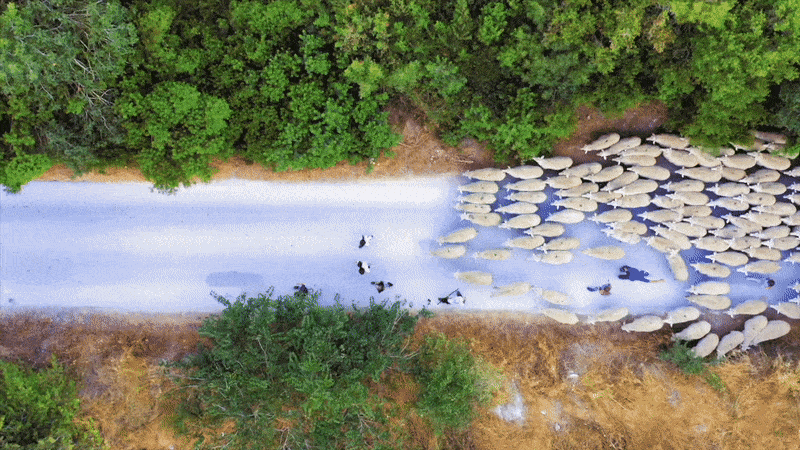“Have you ever counted sheep to fall asleep? If so, you’ll probably find it very relaxing to watch a recent viral video showing a mesmerizing aerial time-lapse of more than 1,000 sheep grazing in grassy meadows.“
The following written content by Mindy Weisberger – Senior Writer
A photographer captured the aerial views over seven months.

Have you ever counted sheep to fall asleep? If so, you’ll probably find it very relaxing to watch a recent viral video showing a mesmerizing aerial time-lapse of more than 1,000 sheep grazing in grassy meadows.
In the footage, recorded by a drone hovering high overhead, the sheep’s tiny bodies swirl, ebb and flow as the flock moves through gates and over fields and pastures. Drone photographer Lior Patel captured the footage in Peace Valley near Yokne’am, a town in northern Israel, and the sped-up time-lapse video quickly went viral after he shared it on Facebook on June 26.
Over seven months, Patel observed and shot drone video of the herd — which ranged in size from approximately 1,000 to 1,700 sheep — as the sheep traveled about 4 miles (7 kilometers) from their winter enclosure to a summer pasture, he told Live Science.
The project began Jan. 2, when Patel sat down with the flock’s shepherd, whom Patel identified by the single name Mustapha, to talk about filming the sheep with a drone, Patel said. The sheep inhabited winter pastures until the weather got too warm and the grass dried up, whereupon they moved to the summer pastures.
“I started coming there once every two weeks,” Patel said.
The first few times Patel visited, he was observing the flock, figuring out the elasticity of the herd “and how it spreads and contracts,” he said. Once Patel was ready to start shooting, the shepherd would indicate the direction in which the flock was likely to move, and Patel would then send his drone into the air and wait for the sheep to pass underneath, monitoring the drone camera through an app on his iPad.
But trying to predict exactly where the sheep would go was often hit-or-miss, Patel told Live Science. Read more from Live Science.





